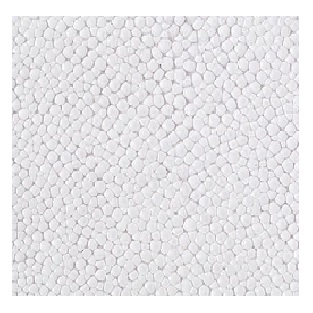The katana blueprint “koshirae”, also known as mounting, is highly complex and detailed, as a genuine Japanese samurai sword consists of many components.
Assembling a katana requires a significant amount of expertise and technique.
By the way, the Samurai Swords made today are also called shinken “real sword”. The most important parts of the katana are the saya, fuchi, tsuka and kashira, tsuba, ito, sageo and samegawa. On the basis of these parts, it is also very quickly recognized whether it is an original or a cheap fake.
Katana Blueprint & Mounting

Saya

The saya (sword scabbard) is most often made of lacquered and real hardwood. Some special examples were reinforced with buffalo horn at the ends, completely covered with ray skin or adorned with the finest carvings or handmade inlays.
Tsuba

The tsuba (crossguard) is located between the handle and the blade and prevents the hands from slipping onto the edge during a thrust. Additionally, the tsuba offers a certain level of protection from the opponent’s stabs and slashes to the hands. This part of the koshirae (mounting) of the katana sometimes consists of richly decorated plates made from metals like iron, copper, zinc, or brass and is partly made by hand and adorned with real gold or silver. (In our shop under “Individual Parts,” you can purchase the tsuba separately.)
Fuchi and Kashira

The fuchi (sword collar) is the collar between the tsuka (handle) and the tsuba. The kashira (pommel cap) is the knob or end cap at the end of the handle.
Menuki
The menuki (grip decorations) are a pair of small, decorative ornaments found beneath the wrapping of a Japanese sword’s handle (one on each side of the grip). These ornaments come in a wide variety of styles and typically are thematically matched with the rest of the mountings.
Habaki
The habaki (blade collar) is sometimes referred to as the “heart” of a Japanese sword and plays two significant roles. The first role is to secure the katana firmly within its saya. The second role is as a shock absorber; a well crafted and properly fitted blade collar contributes to the overall structural integrity of a katana.
Tsuka

The tsuka (handle) is traditionally made of hardwood, covered with samegawa (ray skin), and tightly wrapped with Japanese silk or leather (ito).
Samegawa
The wooden handle is traditionally wrapped in ray skin (Samegawa), whose textured surface prevents the Ito wrapping from slipping.
Ito und Sageo

The ito (handle wrap) is typically made of Japanese silk and is tightly wound around the handle in various styles.
The sageo (sword scabbard cord) is a cord attached to the scabbard (Saya) used for securing the katana better to the belt (obi).
Explained: The Complete Blueprint of a Katana
- Fuchi (縁): The fuchi refers to the collar between the tsuba and tsuka.
- Habaki (鎺): The habaki is a wedge-shaped metal collar that prevents the Katana from falling out of the scabbard (Saya) and also protects the fittings beneath it.
- Kashira (頭): The kashira is the pommel at the end of the sword’s handle (tsuka).
- Koiguchi (鯉口): The koiguchi is the mouth of the scabbard (saya) and is traditionally made of buffalo horn.
- Kojiri (鐺): The kojiri is the protective armature at the end of the sword scabbard (saya) and is traditionally made of buffalo horn.
- Kozuka (小柄): The kozuka is a decorative handle that matches the kogatana; a small utility knife fit into a pocket on the saya.
- Mekugi (目釘): The mekugi is a small metal pin that attaches the tsuka to the nakago.
- Menuki (目貫): The menuki are ornaments/decorations on the handle of the sword (tsuka). Menuki were originally intended to hide the mekugi somewhat.
- Mekugi-ana (目釘穴): The mekugi-ana are the small holes in the handle (tsuka) and nakago for the mekugi.
- Sageo (下げ緒): The Sageo is the name given to the cord with which the scabbard (saya) is tied to the belt/obi when worn.
- Same-hada (鮫肌): Literally means the pattern of ray skin on the handle.
- Same-kawa (samegawa) (鮫皮): The same-kawa is the name given to the ray skin or shark skin covering the tsuka (handle) of the katana.
- Saya (鞘): The saya is a scabbard for the katana blade, the saya is traditionally made of lacquered hardwood.
- Seppa (切羽): The seppa are small discs to place under the tsuba and attach the mount.
- Tsuba (鍔 oder 鐔): The tsuba is a hand guard (stabbing blade) at the top of the tsuka (handle).
- Tsuka (柄): The tsuka is the handle of the sword, traditionally made of wood and wrapped in samegawa.
- Tsuka-ito (柄糸): Tsuka-ito is the name given to the wrapping of the tsuka. The tsuka-ito was often made of silk, but today is often made of cotton or leather.
Buy Katana Parts
In our shop, you can Buy Individual Katana Parts. Browse through our selection of tsuba, fuchi, kashira, and menuki to find the right components for your katana, wakizashi, or tanto, giving your sword a distinctive character.
Customize Your Own Katana
In our Katana Forge you can customize your own Katana from hundreds of individual parts. Choose the blade, the habaki, the tsuba, the ito, fuchi and kashira as well as other details and create your very own samurai sword – a real unique piece!







Katana from our shop:
Katana “Doragon no Hi”
Katana “Kogane no Doragon”
Katana “Mitsuri”
Katana “Roiyaru Tonbo”